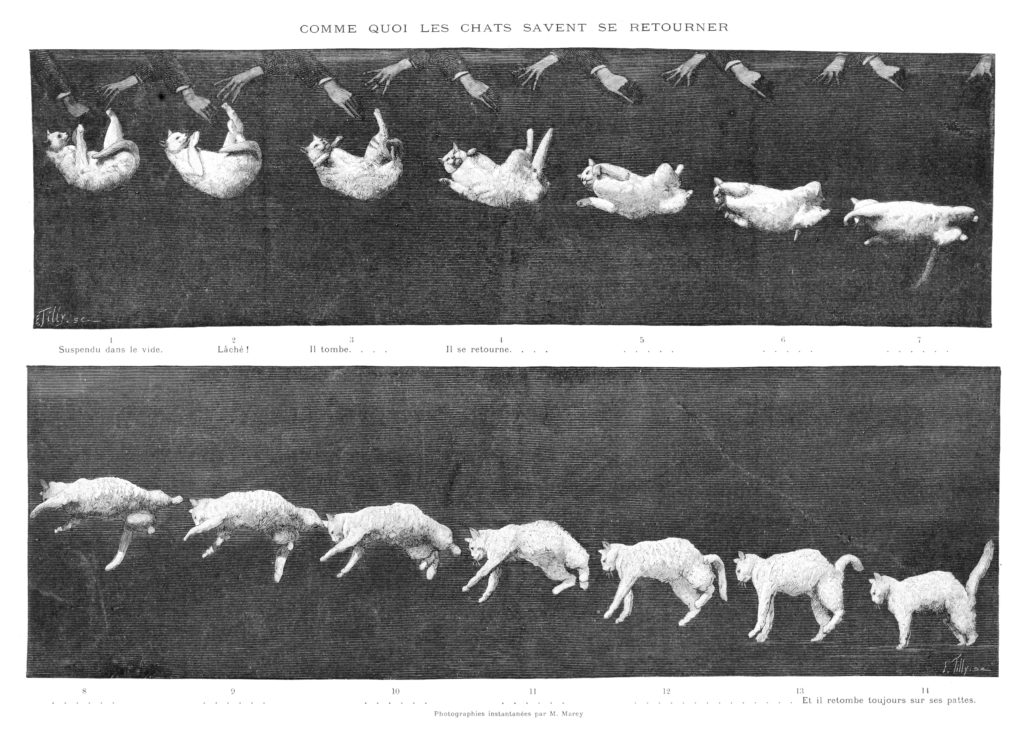Breaking down movement
Following Eadweard Muybridge’s work on the representation of movement, French physiologist Etienne-Jules Marey realized how much he could benefit his own studies via the use of photography. He designed a photographic chamber using glass plates, which he then adapted to the use of film rolls.
In the course of his research, Marey first took an interest in movement inside the body, such as blood circulation and breathing. He then widened the scope of his studies to all forms of locomotion, be they human or animal.
The images captured by Muybridge prompted Marey to turn to chronophotography, a series of successive frames, which broke down movement. Having obtained his first results using a photographic rifle, Marey equipped a photographic chamber with a rotating shutter with adjustable aperture, capturing 10 images per second. Every time the aperture passes in front of the lens, the subject has moved very slightly, and one obtains a succession of movements on the same sensitive plate. The drawback is that the images are superimposed if the subject is not moving fast enough. This problem was solved as early as 1888 by Eastman’s paper film roll, and then by celluloid film in 1890. A press frame device made it possible to move the film forward, and then to stop it for each shot.
The principle of the cinematographic camera was born.


